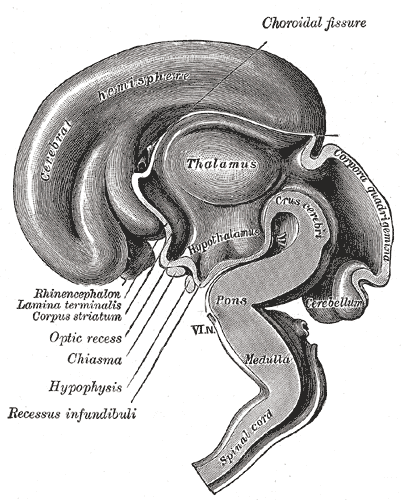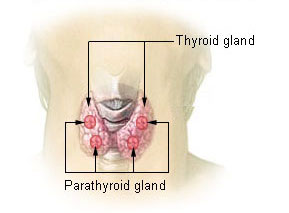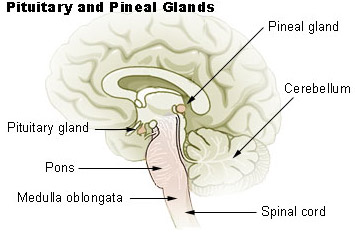Updated September 20, 2020
The human body has a complex chemical messenger system enabled by the endocrine system. The major components of this system, the endocrine glands, consist of specialized cells that release hormones directly into the bloodstream (i.e. ductless) so they can travel to and act on their target organs. The system often works in concert with the nervous system and influences slow physiological processes through hormone cascades. Other major organs also play a role in the endocrine system – brain, kidneys, heart, lungs, liver, thymus, and skin – though they are not glands. Here are the endocrine glands in the human body:
Pancreas
A long soft organ in the abdominal cavity, the pancreas has dual functions – it has ducted gland tissue to secrete digestive enzymes, but it also consists of islets of Langerhans, specialized endocrine cells that secrete insulin and glucagon into the blood stream. The two types of islets (alpha and beta) help control blood sugar based on chemical signals in the blood (insulin triggers glucose metabolism and storage, glucagon triggers glucose release from the liver).

Adrenal glands
These small triangular glands sit on top of the kidneys. Similar to the kidneys, the adrenals consist of a medulla and cortex. The inner layer, the medulla, responds to stress, stimulants, and low blood sugar by secreting catecholamines like adrenaline (also known as epinephrine). The outer layer, the cortex, secretes corticosteroids (e.g., cortisol), which have anti-inflammatory properties. They are also secreted in response to stress, but they help regulate salt and water balance, which involves the kidneys and blood pressure. Corticosteroids are also involved in metabolism and sexual development and function.

Hypothalamus
The hypothalamus is located on the underside of the front of the brain. It acts as a connection between the endocrine and nervous systems. Nerve cells trigger secretion of hormones that control the pituitary gland. The hypothalamus secretes releasing hormones and inhibiting hormones via the hypophyseal artery. The hormones bind to specific receptors on the anterior pituitary to trigger the release of associated hormones (e.g., thyroid releasing hormone from the hypothalamus triggers the release of thyroid stimulating hormone by the anterior pituitary).

Pituitary gland
The pituitary is called the “master gland” (also known as the hypophysis) because it secretes hormones that control other endocrine tissues. It sits directly below the hypothalamus and consists of the anterior (adenohypophysis) and posterior (neurohypophysis) pituitary. The posterior pituitary also forms the pituitary stalk. Each type of pituitary cell secretes one type of hormone, so the gland consists of multiple types of cells. The major hormones secreted by the anterior pituitary include prolactin (stimulates lactation from the mammary glands), growth hormone (stimulates bone growth and nutrient absorption), thyrotropin/thyroid stimulating hormone (stimulates the thyroid gland), corticotropin (stimulates the adrenals), endorphins (act on the nervous system), and follicle stimulating hormone and leutenizing hormone (stimulate the female reproductive system). The posterior pituitary secretes antidiuretic hormone (ADH), which acts on the kidneys to conserve water, in response to chemical signals in the blood.
Thyroid
The thyroid gland is a butterfly-shaped tissue in the neck that controls metabolism, body temperature, weight, and growth, as well as various aspects of almost every tissue in the body. The thyroid utilizes iodine to produce thyroid hormones, which include T3 and T4, but it also produces calcitonin, which acts in concert with parathyroid hormone to influence calcium levels in the blood. Parathyroid hormone is released by four tiny glands on the front of the thyroid called the parathyroids.

Pineal gland
Also known as the pineal body, this tiny gland is located in the center of the brain. The pineal gland secretes melatonin, which regulates sleep and the circadian rhythm. Secretion is stimulated by nerves in the eyes, allowing the sleep-wake cycle to be regulated by light exposure.
Gonads
The gonads are sex organs that release sex hormones, which influence sexual development and function. In males, the testes are a pair of glands located externally in a protective sac called the scrotum. The testes, or testicles, secrete androgens, including testosterone, which influences sperm production. In females, the ovaries are a pair of glands located internally behind the bladder. They secrete estrogen and progesterone.
The adrenal gland also produces androgens, resulting in both sexes having some level of both testosterone and estrogen.
The placenta, the protective layer surrounding a growing fetus during pregnancy, also acts as an endocrine organ, secreting a number of pregnancy-related hormones.
Disclaimer: This page is for informational and learning purposes only. It is not meant to diagnose or treat any medical condition and should not be used in place of speaking with a medical doctor or seeking treatment.
Aliconia Publishing, LLC and the author make any and all attempts to ensure the accuracy of the presented facts. If you find an issue with any information on these pages, please use the Contact page to alert us. The content is subject to change based on new information or to be updated with additional facts. The date of last change is stated under the main header.
